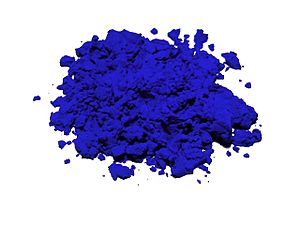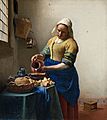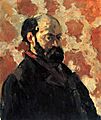Pigment facts for kids


A pigment is a special material that gives things their color. Think of it like a tiny, colorful powder! When you add pigment to something, it changes its color. Pigments can come from many different places in nature, like animals, plants, rocks, and minerals. Even the ground itself, like clay, can be a source of pigments. People can also create pigments in labs.
For example, ultramarine is a famous pigment. It's a powder found in nature that gives a beautiful blue color to paints and dyes.
Contents
Natural Pigments
Natural pigments are colors found in the world around us. They have been used for thousands of years by artists and craftspeople.
Where Natural Pigments Come From
- Plants: Many plants contain natural dyes and pigments. For instance, indigo plants give a deep blue color, and madder roots create reds.
- Minerals and Rocks: Some of the oldest pigments come from minerals. Ochre, a common yellow or red pigment, is made from clay that contains iron. Lapis lazuli, a blue stone, is ground up to make the precious ultramarine pigment.
- Animals: A few pigments come from animals. Tyrian purple, a very expensive ancient dye, was made from certain sea snails.
Man-Made Pigments
People have learned to create pigments in labs, which are called synthetic pigments. These often offer new colors or are cheaper to make than natural ones.
The First Synthetic Dye
The first man-made dye was called aniline mauve. It was invented in 1856 by a scientist named William Henry Perkin. Aniline mauve was a mauve (purplish-pink) color that became very popular for dyeing clothes in the 19th century. It was a big step because it meant people didn't have to rely only on natural sources for colorful dyes.
How Pigments Are Used
Pigments are used in many ways to add color to our world.
In Art and Painting
Artists use pigments mixed with a binder (like oil or water) to create paints. Famous painters like Johannes Vermeer and Titian used expensive and vibrant pigments to make their masterpieces. Vermeer was known for using natural ultramarine for his blues, and Titian used Vermilion for bright reds.
In Everyday Life
Beyond art, pigments are used in almost everything that has color. They are in the clothes we wear, the cars we drive, the inks in our pens, and even the makeup we use. They help make our world bright and colorful!
Images for kids
-
The Milkmaid by Johannes Vermeer (c. 1658). Vermeer used expensive pigments like natural ultramarine.
-
Self Portrait by Paul Cézanne. Working in the late 19th century, Cézanne had many more colors to choose from than earlier artists.
See also
 In Spanish: Pigmento para niños
In Spanish: Pigmento para niños





